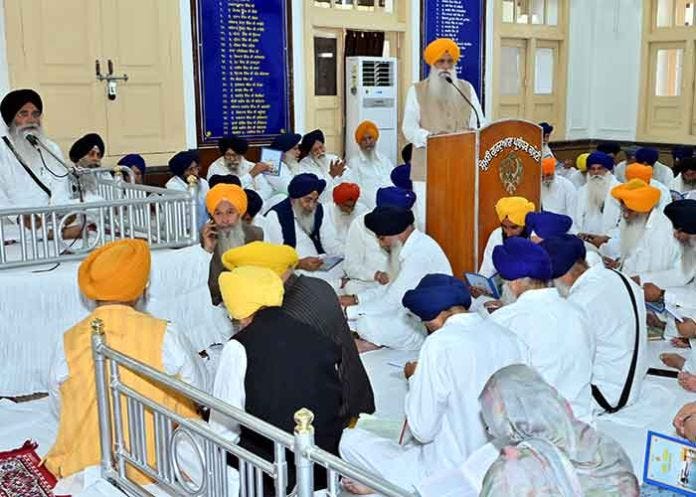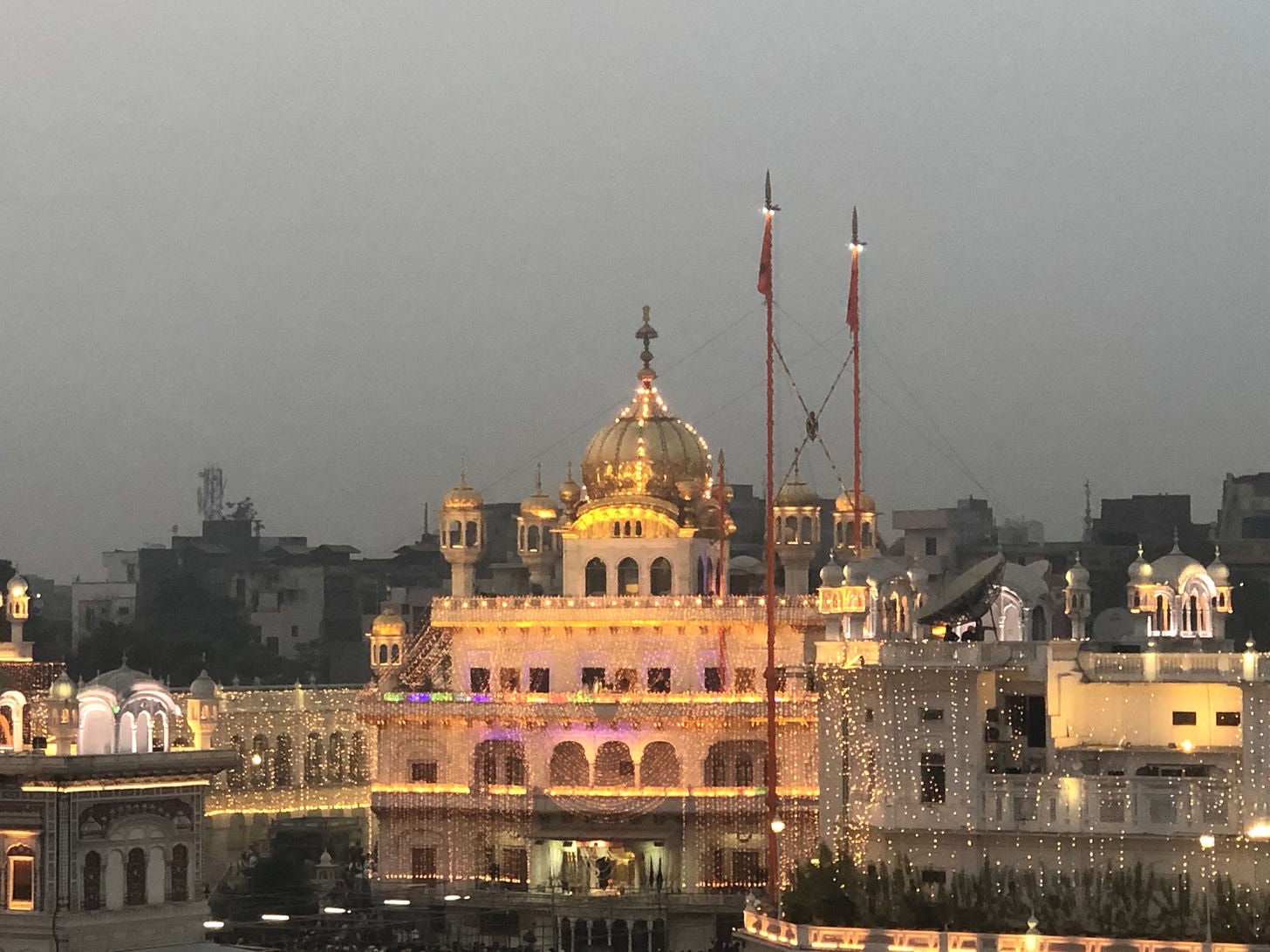SGPC General House Approves Rs 1260 Crore ($150 million) Budget for the Year 2024-25
SGPC's Vision for 2024-25: Charting a Progressive Path with Tradition at Its Core
Budget Reflects Forward-Thinking and Inclusivity
In a significant move that resonates with the aspirations of the Sikh community worldwide, the Shiromani Gurdwara Parbandhak Committee (SGPC1) today (March 29) adopted and approved a landmark budget of Rs 1260.97 crore for the year 2024-25. Amidst the sacred ambiance of the Sri Guru Granth Sahib at Teja Singh Samundari Hall, SGPC Head Office, Amritsar, this financial blueprint was unfurled, reflecting a deep commitment to education, Dharam Prachar (religious preaching), and the holistic development of the Sikh community. The presence of distinguished Sikh leaders, including the SGPC President Sardar Harjinder Singh Dhami and the collective approval of the budget underscore the SGPC's unified vision for a future where faith and progress walk hand in hand.

Empowerment Through Education and Spirituality
A cornerstone of the newly announced Budget is the substantial allocation towards education and Dharam Prachar, with Rs 251 crore and Rs 100 crore earmarked respectively. These funds are designated for a plethora of initiatives aimed at nurturing the intellectual and spiritual growth of the Sikh youth. From commemorating significant Sikh historical events to providing scholarships and free education for Amritdhari students, the budget aims to fortify the community's foundations in faith and knowledge.
Inclusivity and Voter Engagement: A Call to Action
Despite the budget's robust framework, there exists an area of concern: the notable decline in Sikh voter enrollment for the forthcoming SGPC elections, an exercise that is being carried out under the independent supervision of the Sikh Gurdwaras Election Commission after over a decade. This issue brings to the forefront the pressing need for measures to enhance inclusivity and encourage active participation within the community. The SGPC's acknowledgment of this challenge paves the way for strategic interventions, including addressing the concerns and demands of those advocating for Sehajdhari voting rights, encouraging youth to adhere to Sikh tenets like maintaining Kesh (uncut hair), and abstaining from alcohol and tobacco. Moreover, there needs to be concerted push for encouraging Sikh youth over 21 years of age to enroll for SGPC electoral rolls, ensuring that the SGPC's democratic fabric remains vibrant and representative. This aspect was conspicuous by its absence.
Transparency and Community Engagement: A New Paradigm
Reflecting a commitment to transparency and active community involvement, the SGPC should take a significant step of adopting the public disclosure of its audited accounts for 2022-23, along with the detailed budget for 2024-25. This move, aligned with the principles of the Sikh Gurdwaras Act, 1925, more particularly section 115 and 116, would invite the global Sikh Sangat to engage in constructive dialogue, offering suggestions and participating in the governance of their spiritual institutions. Unlike government budgets, where secrecy can sometimes shadow proceedings, the SGPC's approach should champion openness and accountability, fostering a sense of collective stewardship among Sikhs worldwide.
Advocacy and Resolve: SGPC's Key Resolutions
Addressing Injustices and Advocating for Rights
In a significant session of the Shiromani Gurdwara Parbandhak Committee (SGPC), several resolutions were passed highlighting crucial issues facing the Sikh community and Punjab. SGPC President Advocate Harjinder Singh Dhami led the charge in addressing these concerns, ranging from the long-standing detention of Sikh prisoners, known as Bandi Singhs, to calling for the arrest of Dera Sirsa head Gurmeet Ram Rahim and his associate Honeypreet for their alleged involvement in the sacrilege of Sri Guru Granth Sahib at Bargari in 2015. The session underscored a unified stance against government interference in Sikh institutions and the importance of preserving Sikh heritage, especially in Pakistan, where significant Sikh historical sites demand attention for their maintenance and preservation.
Solidarity and Human Rights
The resolutions expressed a deep solidarity with various causes affecting the Sikh community, including the struggles of farmers facing harsh measures from authorities and the controversial extension of the National Security Act against Sikh youths detained far from their home state. The SGPC's statements reflect a commitment to human rights and a call for justice, urging both Indian and Pakistani governments to engage in meaningful dialogue and actions to address these concerns. Additionally, the committee voiced its support for the fight against drug addiction in Punjab, emphasizing the need for community mobilization to combat this scourge.
Cultural Preservation and Social Responsibility
Highlighting the importance of cultural preservation, the SGPC welcomed initiatives to teach Punjabi in Pakistan's Punjab province schools and advocated for the freedom of Sikh Gurdwara properties from illegal occupation. It, however, missed underscoring that this Punjabi would be taught in Shahmukhi script, rather than Gurmukhi prevalent in India, in which almost all the Sikh scriptures are written. The resolutions also touched upon the role of social media, condemning the spread of hate propaganda against Sikhs and calling on governments to take action against such harmful narratives. Through these resolutions, the SGPC not only addresses immediate issues but also lays a foundation for ongoing dialogue and action, reflecting its dedication to the welfare and dignity of the Sikh community worldwide.
Navigating Forward: Tradition Meets Modernity
The SGPC's budget for 2024-25 and the accompanying resolutions are a tribute to the sacred concept of Miri-Piri and a testament to its vision of blending tradition with modernity, aiming to empower the Sikh community through education, spiritual enrichment, and robust engagement in societal issues. However, the emphasis on inclusivity, voter engagement, and transparency would signal a recognition of the need for evolution and adaptation. As the SGPC navigates these challenges, its budget stands as a beacon of hope and progression, inspiring Sikhs globally to partake in a journey towards a future where faith, tradition, and progress coalesce seamlessly, fostering a vibrant and inclusive Sikh identity.
The Shiromani Gurdwara Parbandhak Committee (SGPC) is a key institution within the Sikh community, established to administer the gurdwaras (Sikh places of worship) in Punjab, Himachal Pradesh, and Chandigarh (Haryana is no longer within it’s jurisdiction). It plays a central role in managing the affairs of historical Sikh shrines and is deeply intertwined with the socio-religious fabric of the Sikh community. The SGPC's foundation and operational framework are significantly shaped by the Sikh Gurdwaras Act, 1925, which placed on a statutory pedestal its formation and provided it with a legal framework. This brief discussion delves into the history, elections, and budgetary processes of the SGPC, within the context of the Sikh Gurdwaras Act, 1925.
History
The formation of the SGPC marks a pivotal moment in Sikh history, rooted in the early 20th-century Gurdwara Reform Movement or Akali Movement. This period saw the Sikh community's struggle to wrest control of their places of worship from the mahants (caretakers), who were often aligned with the British colonial administration and accused of mismanagement and practices contrary to Sikh principles. The movement was characterized by mass mobilizations, peaceful protests, and confrontations with colonial authorities, culminating in the enactment of the Sikh Gurdwaras Act in 1925. This legislation recognised the SGPC as the official body to manage the gurdwaras, thereby institutionalising the community's autonomy over their religious spaces.
Elections
The SGPC operates through a democratic framework, with members elected by the Sikh electorate defined within the Act. The elections are intended to ensure that the management of the Sikh gurdwaras is reflective of the community's will. These elections are periodically conducted, allowing adult Sikhs, of over 21 years of age, to vote for their representatives. The electoral process has evolved over the years, with amendments to the Act and changes in the electoral rolls and procedures to reflect the contemporary socio-political context of the Sikh community.
Budgetary Processes
The SGPC's budgetary process is crucial for the sustenance and development of the gurdwaras under its management, as well as for supporting various religious, educational, and social welfare activities. The budget is prepared annually by the SGPC's executive committee and presented during the general house meeting for approval. It outlines the anticipated income, which largely comes from donations, offerings at gurdwaras, and income from agricultural land owned by the gurdwaras. The budget also details the planned expenditures, including maintenance of shrines, salaries, social and educational programmes, and other administrative expenses. The transparency and accountability in the budgetary process are vital for maintaining the trust of the Sikh community, which generously contributes to the SGPC's funds.
Summing Up
The SGPC, under the aegis of the Sikh Gurdwaras Act, 1925, has played a transformative role in the Sikh community, ensuring that the management of gurdwaras aligns with Sikh ethos and principles. While its historical foundation is a testament to the community's resilience and unity in the face of colonial oppression, the electoral and budgetary processes reflect its commitment to democratic principles and accountability. The SGPC continues to navigate the challenges of modernity and changing socio-political landscapes, striving to uphold the legacy and spiritual sanctity of the Sikh gurdwaras.







